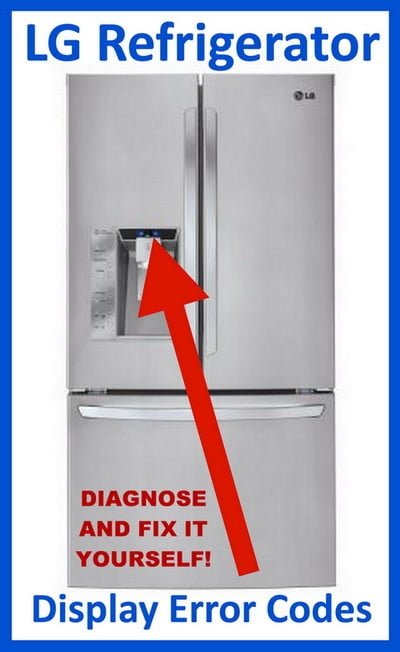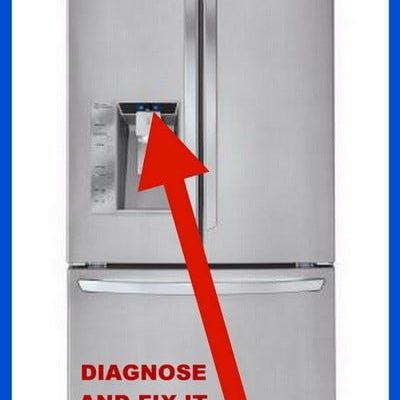
Let’s break it down into everyday terms. An error code like E3 is essentially a distress signal from your fridge. Think of it like your car’s check engine light. It’s not a full-blown emergency, but it’s definitely a sign that you should pay attention. An E3 error on an LG refrigerator generally refers to a problem with the defrost system, which is an essential part of keeping your fridge running smoothly. While it might not spell immediate disaster, it’s not something you want to ignore either.
Understanding the E3 Error Code
So, what exactly does the E3 error code mean for your LG refrigerator? In the simplest terms, it’s like your fridge is letting you know there’s a hiccup in its defrosting process. When your fridge operates normally, it uses a cycle system to prevent frost from building up in the freezer section. The defrost system includes components like heaters and sensors, which work together to keep everything frost-free. Now imagine if your defrost system is like a team, and if one member of the team isn’t pulling their weight, it affects everyone.
When an E3 error shows up, it usually indicates that the defrost sensor isn’t doing its job properly. This sensor is supposed to monitor the temperature and control when the defrost heater turns on. If this sensor fails, frost starts to accumulate, which can affect the cooling efficiency of your refrigerator. It’s like trying to run a marathon in heavy boots—everything just gets more difficult, and your fridge has to work harder—which isn’t ideal in the long run.
Now, does this mean your fridge is going to stop working immediately? Not necessarily. But imagine your fridge as a car: driving with a flat tire might get you to work, but it’s not good for the car, and you’re risking further damage. Similarly, operating your fridge with an E3 error might not cause instant failure, but it’s a sign that maintenance is needed soon to avoid bigger problems down the line.
Causes of the E3 Error and Their Effects
So, why does this error pop up in the first place? There are a few usual suspects when it comes to the E3 error code. First, the defrost sensor might have a problem. Over time, just like any other electronic component, sensors can fail due to wear and tear. This kind of failure can prevent the defrost heater from coming on, leading to frost accumulation in the freezer section.
Next, there could be an issue with the defrost heater itself. If the heater isn’t working, frost buildup will definitely be an issue. Picture this heater like a little blowtorch melting away the frost—if it doesn’t switch on, you’re left with a freezer full of icy build-up. Another possibility is a problem with the control board, which is like the brain of your refrigerator. If there’s a glitch or fault in the control board, it might not be sending the right signals to the defrost system.
What are the consequences of ignoring this error? Frost build-up is a major one, and it can lead to inefficient cooling. This inefficiency can cause your fridge to run constantly as it struggles to maintain the right temperature. In turn, this can drive up your energy bills and could potentially shorten the lifespan of your appliance. Remember, it’s always easier (and cheaper) to maintain machines than to repair them after they’ve broken down.
What to Do When You See the E3 Error Code
Okay, you’ve spotted the E3 error code—what’s next? First and foremost, don’t panic. While it’s important to address the issue, it’s usually not an emergency that requires an immediate call to the service technician. A good first step is to consult your refrigerator’s manual. There might be specific instructions for your model that can give you some initial troubleshooting steps. Think of this as checking the map before calling for directions.
If you’re comfortable doing so, you can try a soft reset. Unplug the fridge for about five minutes and then plug it back in. This is like rebooting your computer—a simple restart can sometimes clear up the error if it was caused by a temporary glitch. However, if the error persists, it’s time to consider reaching out for professional help.
Calling a technician is your best bet to get things back on track. They’ll be able to diagnose whether the problem lies with the sensor, the heater, or something more complex like the control board. While this might involve some expense, it’s worth it to restore your fridge to full working order and ensure it’s running efficiently and safely.
Preventive Tips to Avoid Future Issues
Finally, let’s talk about how you can prevent this kind of situation from happening again. Regular maintenance is key. Think of your refrigerator like your car; regular check-ups keep it running smoothly. Cleaning the coils, ensuring the doors seal properly, and keeping the interior free from excessive frost are all good practices.
Additionally, try to avoid overloading your freezer. A packed freezer blocks air circulation, which makes it harder for the defrost system to do its job. Remember, your fridge needs space to breathe, just like you do after a big meal.
Also, keep an eye on your energy bills. A sudden spike can indicate your refrigerator is working overtime due to a hidden issue, like a defrost system problem. Catching this early can help you avoid more serious issues later on.
By staying proactive and addressing small issues as they arise, you can keep your LG refrigerator running smoothly and efficiently for years to come. And if any mysterious codes pop up along the way, you’ll know just how to tackle them.
